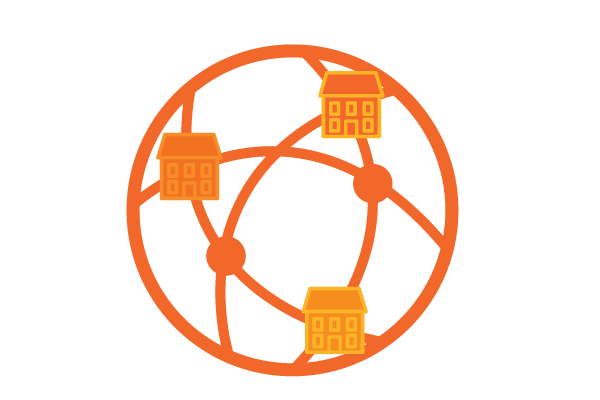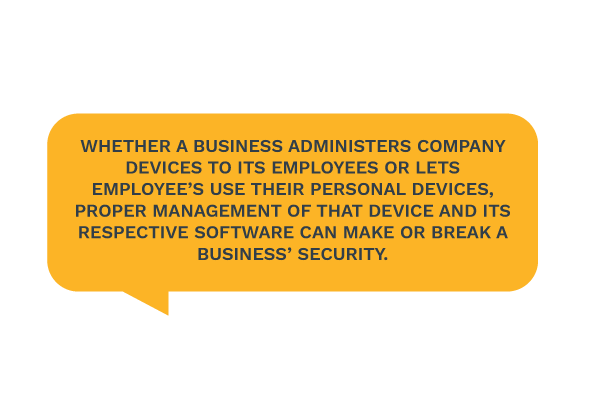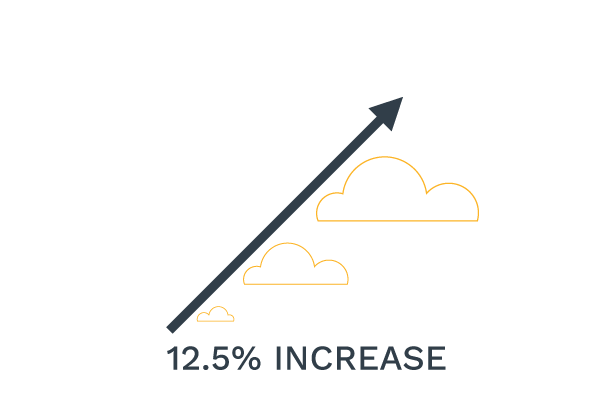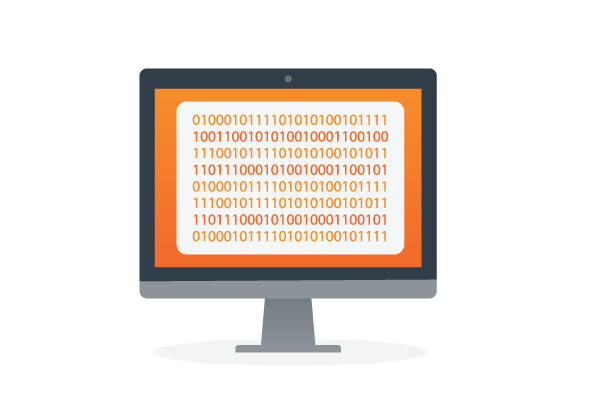As COVID-19 continues to plague the economic and commercial world, many businesses, small and large, have felt the technological impacts of the virus.
Companies around the world have frantically tried to instill new guidelines and regulations to keep their employees safe and productivity high while dealing with the transformation to an online workforce. The unprecedented pandemic forced businesses everywhere into full blow digitization. Due to the multitude of businesses having their employees work remotely during quarantine, this current wave of digitization is vital to maintain productivity.

For many companies, the idea of an entirely online transition was never a conceivable plan, therefore most workers may not have excessive knowledge on how to properly navigate a digital workspace. Alongside uncertainties of the transition comes cyber risks like phishing scams and malware, which is why it’s important to have a decisive IT strategy in place to bolster good cyber security and utilize solutions to keep employee workflows efficient.
Despite all the complications and obstacles faced by the current economic and commercial world, the coronavirus outbreak has made one thing in particular very clear: Having a strong and secure IT strategy is the most vital part of any company’s success. Trends such as heavier digital based IT infrastructure, stronger cyberthreat solutions, and improved telecommunication have all been prominent changes in response to COVID-19. So, following the pandemic, what has your company changed regarding this new surge of digitization?
Here are trends we’re seeing that have changed the way businesses go about their IT strategies because of COVID-19.
Developing a Secure Hybrid Infrastructure to Ensure Proper Remote Access
Hybrid infrastructure is a system used by companies where they rely on a mixture of physical based and digital based platforms. The content on these platforms include a company’s “IT infrastructure” which is basically hardware, software, networks, storage, and more. For example, businesses may use the cloud for file storage while also using physical copies of information. Needless to say, hybrid infrastructure has been a handy business tool when trying to minimize costs and maximize digital use. But despite the 50% digital use, the other half is only accessible on site. So when COVID-19 pushed for employees to work remotely, tons of companies lacked the ability to share important information online.

This brings back the concept of post-pandemic digitization. Upon realizing the struggles of some IT strategies, companies will begin developing stronger, more digital based platforms. Whether this means instilling a new hybrid-infrastructure system or expanding and strengthening digital facilitation, more workflows than ever will be digitally managed in order to provide easy access for remote workers.
For example, while employees conduct their everyday jobs through a screen, there are new software programs to ensure productivity while working remotely. These include; video conferencing software to regulate meetings, learning management systems to keep employees updated with company news, time tracking software to manage employee’s hours, remote access software to provide technical support, and performance management software to track productivity and give feedback. As we’ve seen, digital transformation is important to accommodate a long-term workforce.
Developing hardware and software systems that can be fully accessed by remote workers, both seamlessly and securely, is integral to optimize your company’s operations. A simple example would be full telecommunication. This may include a secure communication system for your team, a proper electronic document management system, and access to a secure and reliable network connection. Also, considering an outsourced IT manager, which is a third-party company that controls all your business’ IT systems, may help strengthen your online operations.
Extensive Consideration of Cyber Threats with Stronger Solutions
One of the more unpleasant discoveries companies have made through this crisis is the lack of sufficient cyber security, for businesses with both remote and traditional workforces. Hackers prey on the concerns and worries of individuals about the looming pandemic, which makes it easier for them to target a company’s weak digital transition in this new “working from home” era. Common scams, such as email phishing, contain COVID-19 related titles and when opened, distribute malware.
In the past few months, cybercriminals have been exploiting teleworkers by taking advantage of their trusted IT infrastructure like remote working and communication tools. For example, recently a huge phishing scam dealt with the popular video chat platform, Zoom. Due to remote working, people around the world have turned to Zoom to conduct business. Cybercriminals acknowledge this gold mine and sent out phishing emails with titles like “zoom-us-zoom_##########.exe,” which can give direct access to confidential information.

Since companies everywhere are experiencing such a high influx of scams in relation to the pandemic, there has been a huge incentive to create stronger solutions in order to defend against cyberthreats moving forward. But what actions are being taken to prevent these cyberthreats? Here are a few:
- Acknowledging the threat vectors at risk of cyberattacks. Threat vectors are different gateways cybercriminals use to distribute malware. For a business, the most common threat vectors may include weak networks, phishing emails, mobile devices like phones and tablets that can emit malware to corporate networks, or any company distributed device that is remotely using an unsecured network, whether that be an employee’s home network or a public network. Once the myriad of risk routes are considered, it’s easier to conduct a strategic protection plan.
- Considering the expansion of software licensing requirements. Before the pandemic, most companies probably had licensing requirements that allowed VPN network use for workers. But since VPN licenses are probably limited within the company, there may not be enough to handle a fully remote staff that all need secure access to the network. It’s important to approach issues like these as quickly as possible in order to provide secure network connection to all remote workers.
Using an intruder prevention system for cyber threat protection. An intruder prevention system (IPS) is a type of security application that controls IT network access and works to detect malicious activity within your network system. The IPS systems monitor all company network traffic and terminate any suspicious activity. After preventing attacks, an IPS system can also reprogram firewalls to minimize threats of similar malware. Having a strong IPS system can augment security when dealing with frequent cyberthreats.
A Heavier Focus on Telecommunication
The most prominent lesson businesses have learned from the COVID-19 chaos is the importance of communication. Before, it was easy to converse with a coworker that sat five feet away or attend a meeting to discuss confidential information. Now, in the era of absolute digitization, telecommunication has become a vital but risky endeavor. So, both how you communicate and what you communicate are important aspects of navigating the rough waters of digitization.
When discussing proper telecommunication operations, it’s important to mention device management, which is the process of properly managing devices to ensure safe use. Tools at your disposal such as voice calls, email, group messaging and video chats can help bolster communication but may also pose a threat. Whether a business administers company devices to its employees or lets employee’s use their personal devices, proper management of that device and its respective software can make or break a business’ security.

When sharing confidential information or conducting online meetings, communication systems and networks need to be protected. Here are a few precautions that are commonly used:
- Meetings always need a password so the video chat or call is not public
- Employees should have all necessary communication applications up-to-date
- Screen sharing should be switched to “Host Only” to avoid public device access
What exactly is communicated within a company is a large part of keeping morale and instilling security. It’s important to discuss positive news like health, safety, and helpful quarantine tips. Similarly, it’s crucial to bring awareness of cyber threats when working remotely. This includes warning employees of potential phishing scams, tips on using secure networks, and proper device operations to prevent data loss.
Security training can equip your employees with the skill to recognize attacks and habitually report any suspicious activity or conversations. Proper communication and cybersecurity guidance will strengthen your company against attacks aimed at exploiting a remote workspace.
An Increased Demand for Cloud Infrastructure
All around the world, companies are expected to increase spending on cloud infrastructure, with a continued demand for cloud-based services. According to a global forecast research, investments in cloud communication and collaboration technologies will reach $295 Billion in the beginning of 2021, up from $233 at the end of 2019. This represents a 12.5% increase over the year.

COVID-19 and the subsequent lockdowns have pushed Telecommunications and Information Technology companies to develop infrastructure that facilitates remote work arrangements. Information Technology departments are also striving to enable telecommuting using a number of mobility tools and services. Cloud infrastructure facilitates a host of mobility tools. Therefore, there will be a noted global increase in demand for cloud services and infrastructure in the post-COVID-19 era.
With most employees working from home, this pandemic period has created a shortage of on-site IT staff. To address this unprecedented shortage, companies are leveraging cloud infrastructure to help them monitor and maintain their enterprise server installations at data centers. Many businesses globally are turning to cloud services to help soften the blow of COVID-19, enhance data security, manage a remote workforce and to ensure continued productivity amid the pandemic. The remote workforce introduces conflicting schedules between geographically distributed IT staff. Companies are using cloud infrastructure to avoid downtimes in IT administration to ensure network security and availability.
Upgrade of Companies’ Tech Stack
Disruption of business globally has caused financial strain on most companies, with many ventures choosing to lay off their workers as a way to reduce spending. With a reduced workforce, software companies are upgrading their tech stack to enhance product development. With an upgraded tech stack, companies can boost productivity while maintaining a small workforce.
Most software companies have embraced automation, trying to develop as many products with minimal human intervention. With a higher investment in technology, IT companies can write, test and deploy code rapidly and are able to scale their solutions effectively. A 2020 trend in Software Development research observed that the most popular tech stacks in the year were those that offer high functionality with reduced human input. These include the MEAN, MEVN and LAMP stacks.
The pandemic period has left top-tier software developers working from home at consistent levels of productivity. This has proven that remote working arrangements are a feasible option. Investing in the technology that supports remote work will help companies achieve success as we enter the post-pandemic period. An effective technology stack ensures that you can reuse code throughout the entire application, eliminating the need for human intervention. This means that the systems must integrate the back end, front end, database management systems, content management systems, mobile technology, website server, and graphics library among others.

The Need for Faster Access to Data
With a greater portion of the population working from home, there is the need for faster communication and data access. While current internet connections can handle daily communication, they lack the capacity to accommodate the increased bandwidth demands of a remote workforce. IT teams globally are working to upgrade telecommunication infrastructure with larger bandwidth for fast, unlimited access.
Work from home arrangements have seen an unprecedented rise since the start of the pandemic, necessitating the creation of remote access policies by companies. These policies outline, among other things, the technologies that facilitate telecommuting and their minimum bandwidth requirements. With increased telecommuting functionality, modern collaboration applications have large bandwidth requirements. To meet these requirements, companies invest in networking equipment that enhances automation and communication.
Better telecommunication equipment allows employees to access business-critical information as quickly as possible. If business information is difficult to access and process, employees report reduced productivity when working remotely. IT experts in companies are striving to ensure that all employees can view sales materials, departmental project progress, budget and all performance data that is crucial to decision-making. With the upcoming 5G revolution, companies will be able to use sophisticated telecommuting tools while allowing their employees quick and easy access to company data.
Categories: Security, Cloud, Communication, Managed Services











